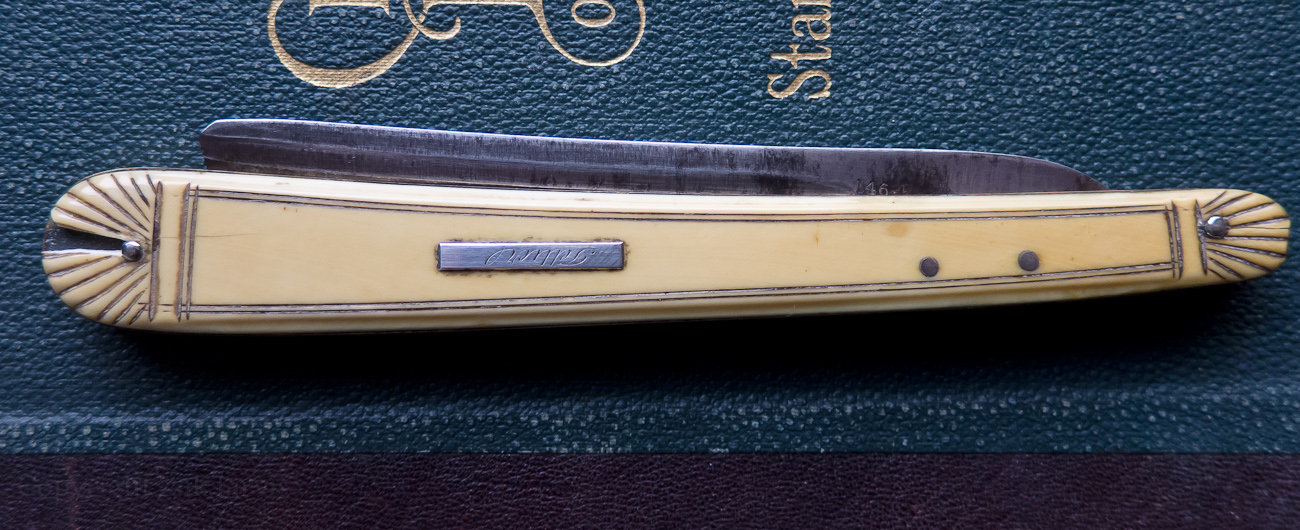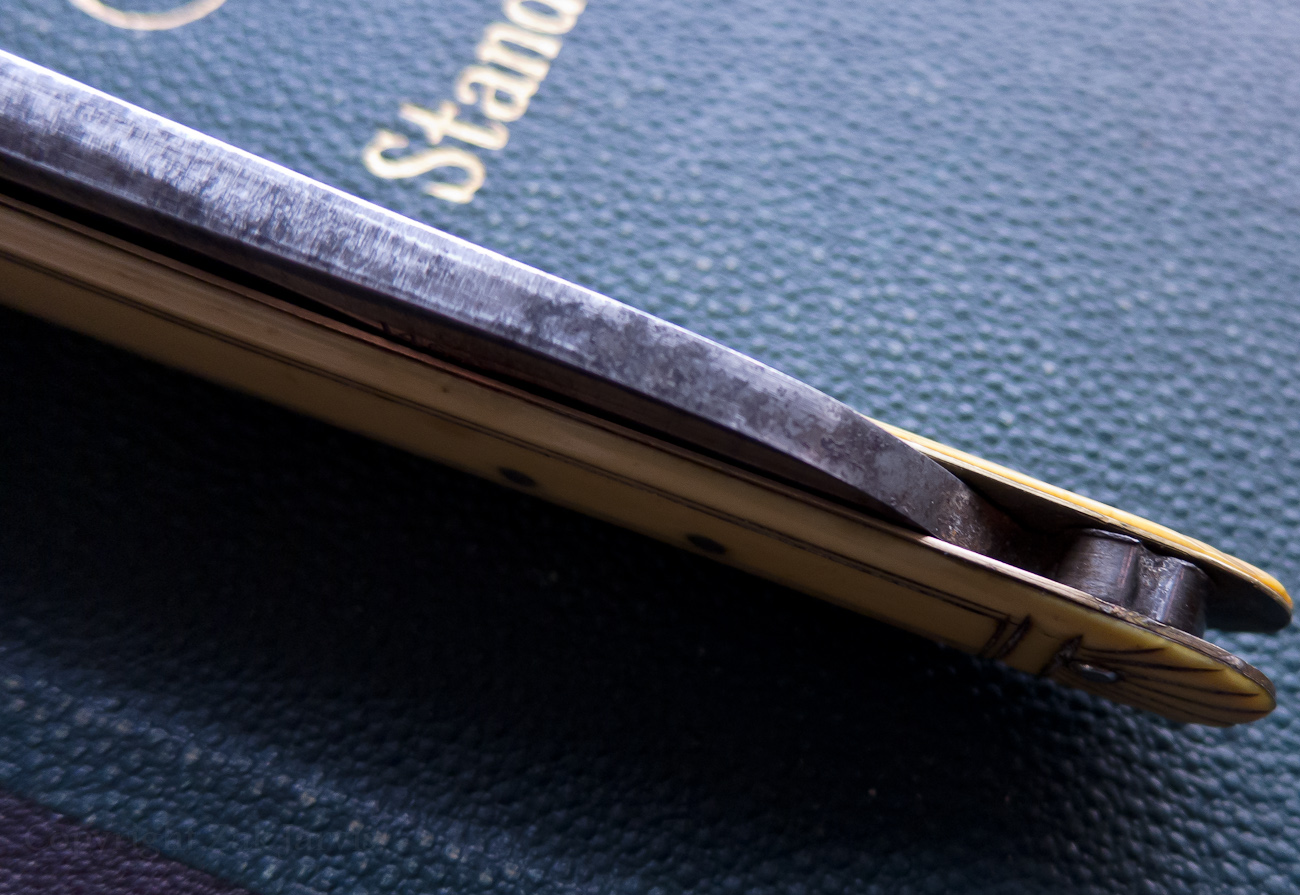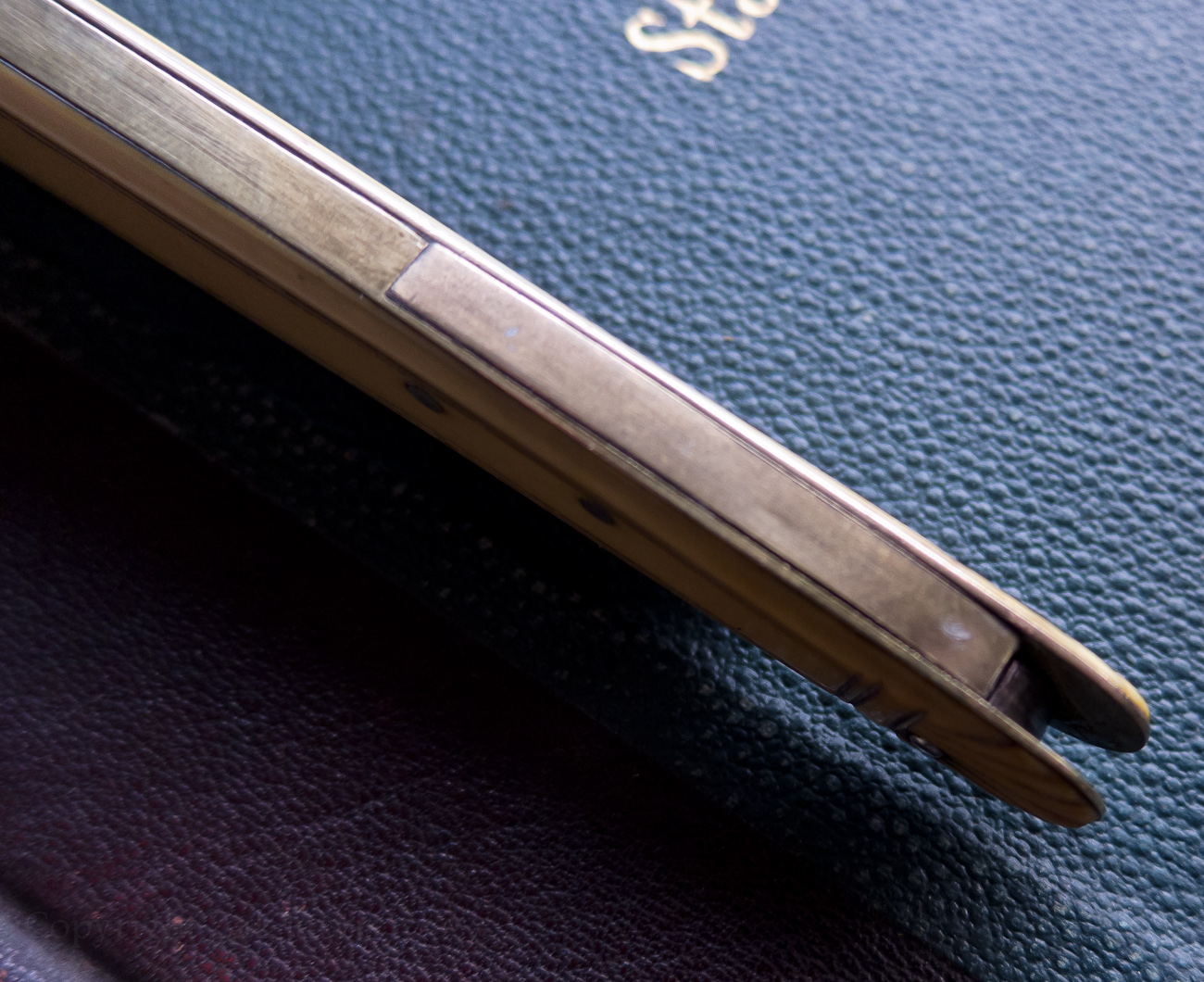Results 1 to 10 of 15
Threaded View
-
12-08-2012, 06:09 AM #1
 146 Regent St -- A very strange razor.
146 Regent St -- A very strange razor.

SRP member ScienceGuy pointed this razor out to me on eBay because it is very odd. I then bought it.
Because it is very odd.
The escutcheon plate is beautifully engraved Tellier.

The scales are ivory, and you might have noticed that they have rather a lot of pins in them that aren't purely decorative.

The spine is very thick for a razor of this size (a scanty 5/8), the wedge is not a wedge, there is a brass liner under the ivory and ... what on earth is going on with the tail? I originally thought it had been ground off and reshaped -- bizarrely, but I was wrong.

Something else is going on here.

The scales are closed at the bottom.

The pivot end.

The first thing you notice when you open the razor is that it's held closed, so you pull, there's a slight give and then the blade swings smoothly, freely out. And it's got a very oddly shaped tang.
And the rest will be in the next post, because LOTS of pictures...-Zak Jarvis. Writer. Artist. Bon vivant.
-
The Following User Says Thank You to Voidmonster For This Useful Post:
Thaeris (05-18-2014)


 19Likes
19Likes LinkBack URL
LinkBack URL About LinkBacks
About LinkBacks







 Reply With Quote
Reply With Quote